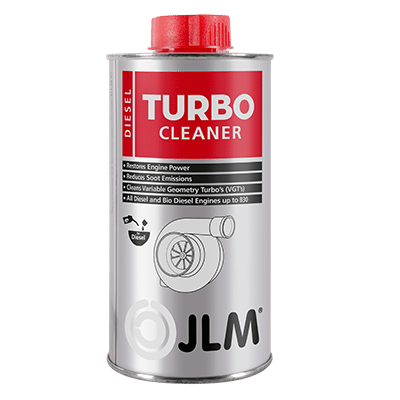When it comes to reducing emissions in modern engines, one technology stands out: Exhaust Gas Recirculation (EGR). If you’ve ever wondered how your vehicle stays within emission regulations or how it’s able to cut down on harmful gases like Nitrogen Oxide (NOx), the EGR is the answer.
In this article, we’ll break down exactly what the EGR is, how it works, and why it’s so important for both your vehicle and the environment. Keep reading to discover how understanding your EGR system could save you costly repairs and how JLM can help.
What is exhaust gas recirculation (EGR) and how does it work?
Exhaust Gas Recirculation, or EGR, is a system designed to reduce harmful emissions, particularly Nitrogen Oxide (NOx), from your vehicle’s exhaust. NOx is one of the biggest contributors to air pollution and can lead to smog and respiratory problems. The EGR system is designed to help to lower the temperature of combustion in the engine, reducing the formation of NOx gases.
How does the EGR system work
The EGR system operates by directing, cooling, and recirculating a controlled portion of exhaust gas back into the engine’s intake system. This process mixes the exhaust gases with fresh air, diluting the air and fuel mixture, which lowers the engine’s combustion temperature. By having this lower temperature, less NOx is formed during combustion and therefore reduces air-polluting emissions. This system can typically be found in most modern diesel and petrol engines.
Components of the EGR system
An EGR system consists of several key components, with the EGR valve being the heart of the operation. The EGR valve regulates the flow of exhaust gases into the intake, ensuring the appropriate amount is reintroduced into the air intake system according to engine load and temperature.
There are various types of EGR valves, vacuum-operated or electronic, that each serve slightly different purposes. To learn more about the different types of EGR valves and how they function, you can refer to our in-depth guide on EGR valve cleaning which discusses the two main types of EGR valves.
Why is the EGR system important?
The EGR plays an essential role when combating air pollution. As mentioned, one of its primary roles is the reduction of Nitrogen Oxide (NOx) emissions, which are particularly harmful to the environment and our own health.
NOx gases contribute to the formation of smog, giving it a yellowish-brown colour. Nitrogen oxides react with sunlight and volatile organic compounds (VOCs) to form ground-level ozone, which, along with fine particulate matter, is linked to respiratory issues.
One key part of the EGR process is reducing combustion temperatures. By lowering these temperatures and reducing NOx emissions, the EGR plays a critical role in keeping emissions within legal limits. In addition, EGR systems improve fuel efficiency, as lower combustion temperatures allow for a more controlled and complete burn of fuel.
EGR failure
Like any mechanical system, EGR can fail. When this happens, your vehicle may experience a range of issues including poor engine performance, increased fuel consumption, and higher emissions of harmful gases like NOx. Common signs of a faulty EGR system include rough idling, decreased fuel efficiency, or the appearance of a check engine light.
The EGR valve (and air intake) will slowly become contaminated over time especially in diesel engines with higher particulate levels. EGR failure can occur due to carbon buildup within the valve, causing it to stick or clog. This build up slowly throttles the engine as it is able to draw less and less air for combustion. Motorists often do not notice this as it’s gradual. Due to this, it’s crucial that the EGR and air intake are always cleaned on a regular basis to remove low level contamination.
If build-up is left unchecked and gets too heavy, the only way to clean it is with an expensive mechanical strip down or even a full EGR valve replacement. For detailed guidance on how to clean your EGR valve, check out our guide on EGR valve maintenance.
While replacement costs can be expensive, typically ranging from £150 to £650 depending on your vehicle model and damage to other components, there are cost-saving alternatives like JLM products that can help.
Avoid EGR valve replacement costs with JLM products
Instead of facing a costly EGR valve replacement, explore our JLM EGR products designed specifically to maintain and clean your EGR system. JLM Lubricants offer a range of solutions that can remove deposit build-up and restore your EGR valve’s functionality. We have listed a few of these products below:
- JLM Petrol & Diesel Air Intake & EGR Cleaner: A targeted and effective cleaner for the exhaust gas recirculation system (EGR) which dissolves rust, dirt and soot deposits.
- Diesel Extreme Clean: Super strong all-in-one cleaner that detoxes the entire petrol fuel system including combustion chambers, valves, the EGR and spark plugs.
- Petrol Extreme Clean: Super strong all-in-one cleaner that detoxes the complete diesel fuel system, including turbo and EGR valve. This is a cetane improver and promotes DPF regeneration.
For more detailed guidance on how to use these products effectively, make sure to check out our step-by-step article on EGR cleaning using JLM products.
Common EGR FAQs
What happens if exhaust gas recirculation fails?
If your EGR system fails, your vehicle will likely emit higher levels of NOx gases, which can lead to an increase in air pollution and potentially make your vehicle non-compliant with emission standards. You may also experience poor engine performance and fuel efficiency issues.
Does the EGR reduce power?
In some cases, especially when malfunctioning, the EGR can cause a slight reduction in power due to the reduction in amount of oxygen available for combustion during the dilution process. This can make the engine feel less powerful at times. However, when operating properly, it should have minimal impact on overall engine performance and may even enhance fuel efficiency by optimising combustion.
In addition, the EGR has also been noted to accelerate engine oil degradation with a higher number of contaminants in the oil. This can lead to deposit build-up on engine components such as the valves, reducing engine efficiency and reducing the overall lifespan of the engine.
Can I drive with a faulty EGR?
While it may be possible to drive with a faulty EGR as long as it isn’t significantly affecting your vehicle’s performance or safety, it’s not recommended. A malfunctioning EGR system can lead to increased emissions, poor fuel economy, and potential long-term damage to your engine. It’s best to address the issue as soon as possible to avoid further complications.

